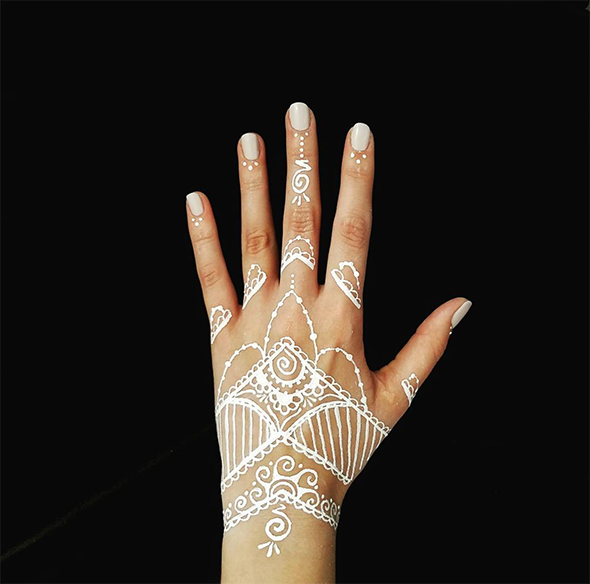The Journey to Jagua

Prepare yourself for an onslaught of “woke” Instagram posts and hippie-chic clothing lines flooding your Facebook feed; Festival season is upon us! As influencers and techies alike swarm the once desolate fields, swaying to the latest EDM mashups, clothing becomes scarce and glitter and flower crowns become apropos; mild appropriation occurs as fashionistas naively don cornrows or feathers purchased at the nearest fast-fashion retailer; and every sad sob stuck in an office rolls his or her eyes, feigning indifference at what, admittedly, looks like a damn good time. Henna, traditionally used for social occasions in select Eastern cultures (most recognizably in Indian weddings), has also recently become a trend in the fashion and festival worlds, with floral scrolls and linear abstractions climbing up the wrists of many a festival frolicker. Earth Henna, a family owned business, foresaw this trend when they started their business back in 1997 and branched out to offer creative kits as well as unique dye colors to stand out from the rest of the temporarily-tattooed crowd.
Husband and wife duo, Pascal Giacomo and Carine Fabius, opened the first henna tattoo studio in the United States. It was through this direct work with pleased customers that the idea to package and sell henna kits was born. The pair earned media accolades for their work, and Fabius even published a book on the art form. Nowadays, henna artists can be hired for weddings and kits can be bought online or at certain retailers, so frankly, what sets Earth Henna apart is not obvious at first. However, the brand has a unique story and a commitment to keeping the product natural that distinguish it from others.
Reading the Earth Henna story is almost like delving into The Alchemist — if you close your eyes, you can almost picture Giacomini wandering like a shepherd through the deserts of Morocco. In the Sahara Desert, Giacomini learned about the henna harvesting process, where a family of henna farmers showed him the mill where dried leaves were turned into powder for application. After finding the source for the tattoos, Giacomini and Fabius then proceeded to improve the shelf life while still keeping the product natural. After a plethora of tests and trial runs, their flagship product was born.
After the success and popularity of the traditional “red” henna kits, customers began to inquire about black henna that mimics real tattoos, and so began the second international research journey. This trip brought Giacomo to the Peruvian Amazon where he met the very primal tribe of Matsés Indians in the jungle. After begrudgingly welcoming him into their community, they showed him the jagua fruit and the processes used to create all natural, non-harmful jagua tattoos, i.e. temporary, all-natural, black tattoos.
So, if you are contemplating getting a real tattoo, Earth Henna’s Black Jagua Temporary Tattoo Kit might be the safest way to test out some designs before committing. The kits also come with stencils if you don’t know what design you want, or if you just recently had five espresso shots. And, if you are going to Outside Lands, Bonnaroo, Coachella, etc. — for the first or tenth time — you will impress the other revelers with your deviant, dark jagua tattoos.
Text by Leah Tassinari
Photo Courtesy of Earth Henna

